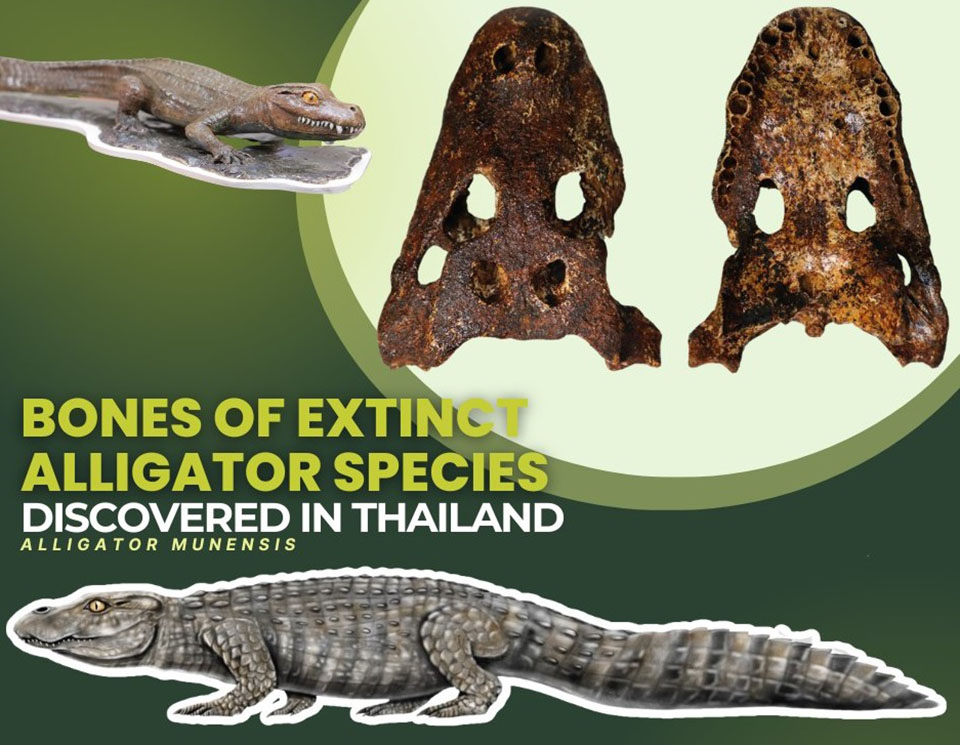
Thailand’s Ministry of Natural Resources and Environment has recently announced the discovery of the reptile fossils of Alligator munensis, an extinct alligator species that lived in ancient Thailand approximately 230,000 years ago.
The fossil site is located at Ban Si Liam, Non Sung district, Nakhon Ratchasima province in northeastern Thailand. The name Alligator munensis was chosen to honor the Mun River nearby.
The characteristics of Alligator munensis’s skull are distinct from other alligator species, such as a wide and short snout, a tall skull structure, reduced number of tooth sockets, and nostrils that are positioned far from the tip of the snout.
The alligator is a member of the large crocodilian reptile family, mostly found in fresh water. Currently, two living alligator species include the American alligator (Alligator mississippiensis) and the Chinese alligator (Alligator sinensis). (PRD)






